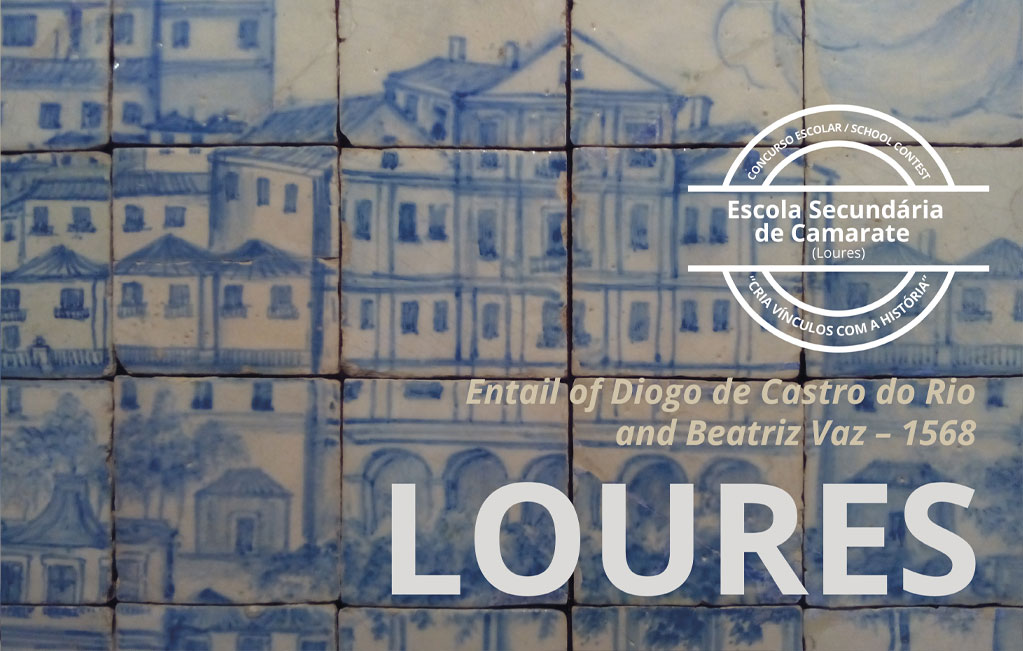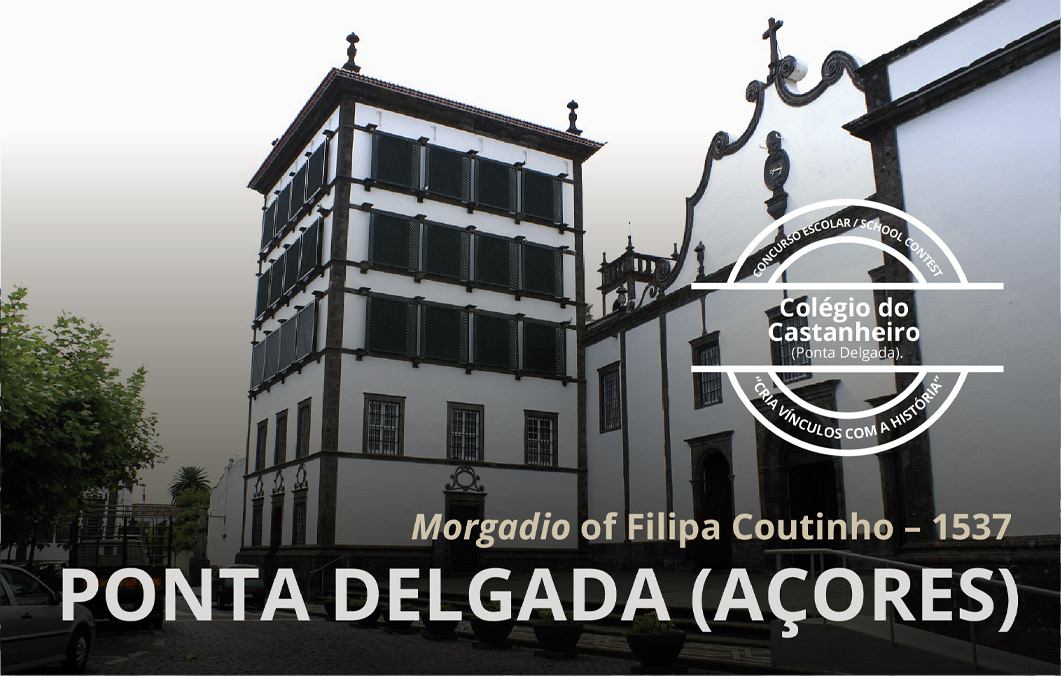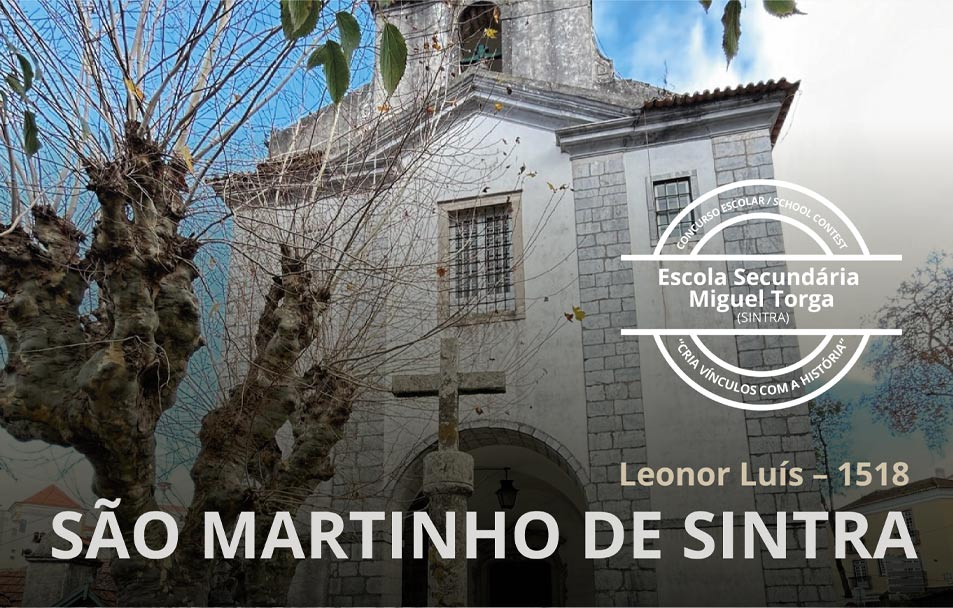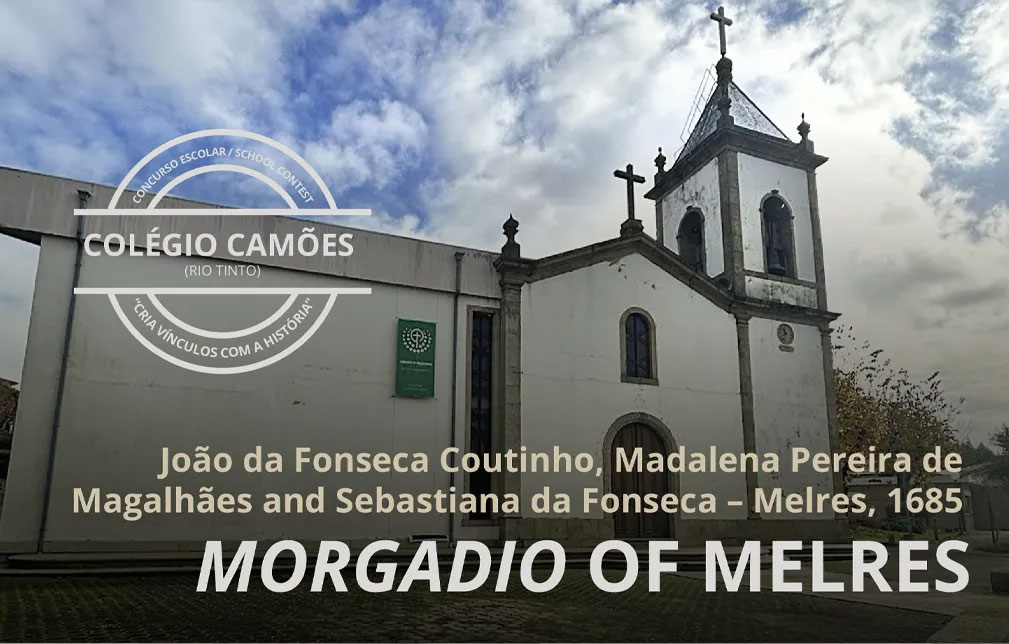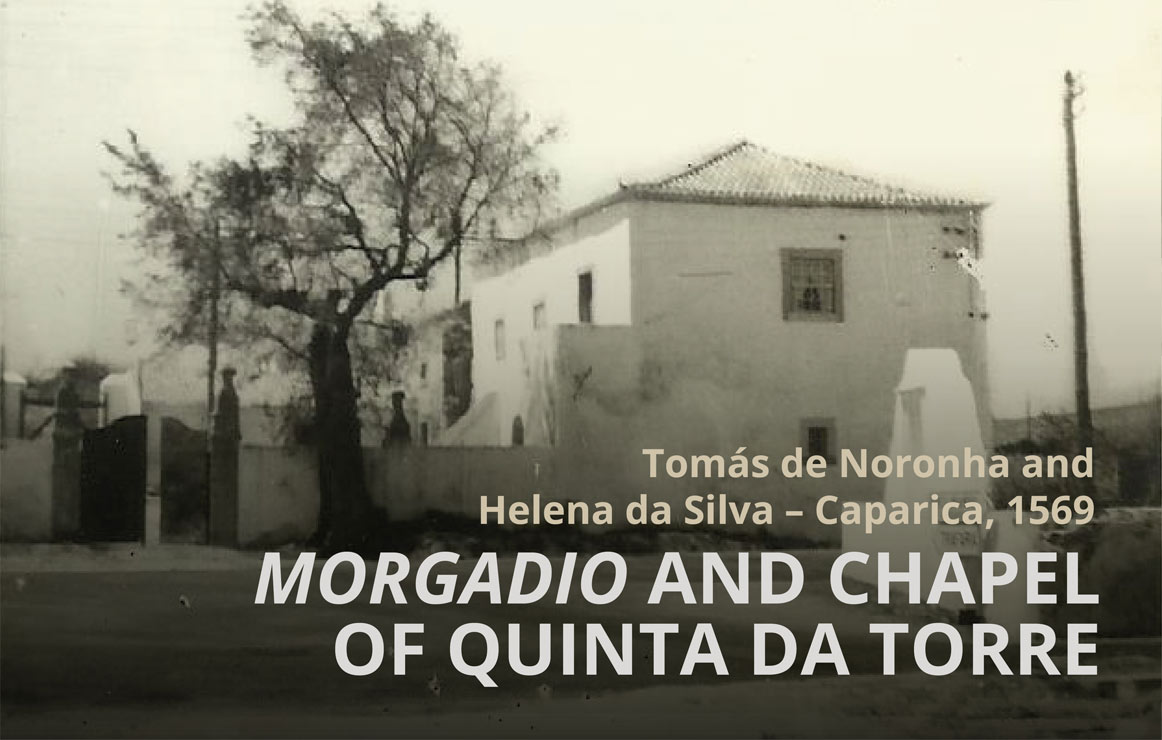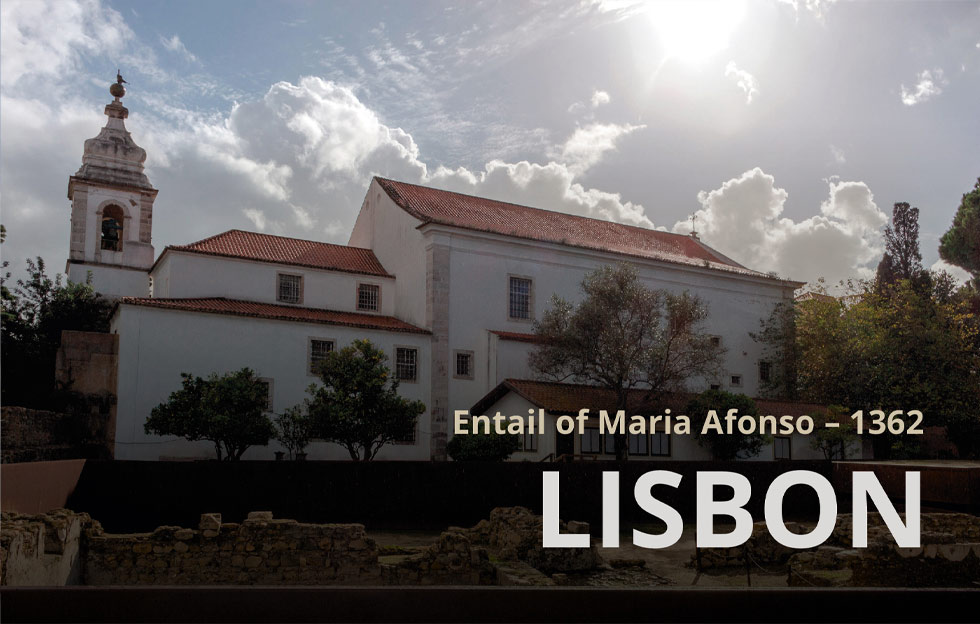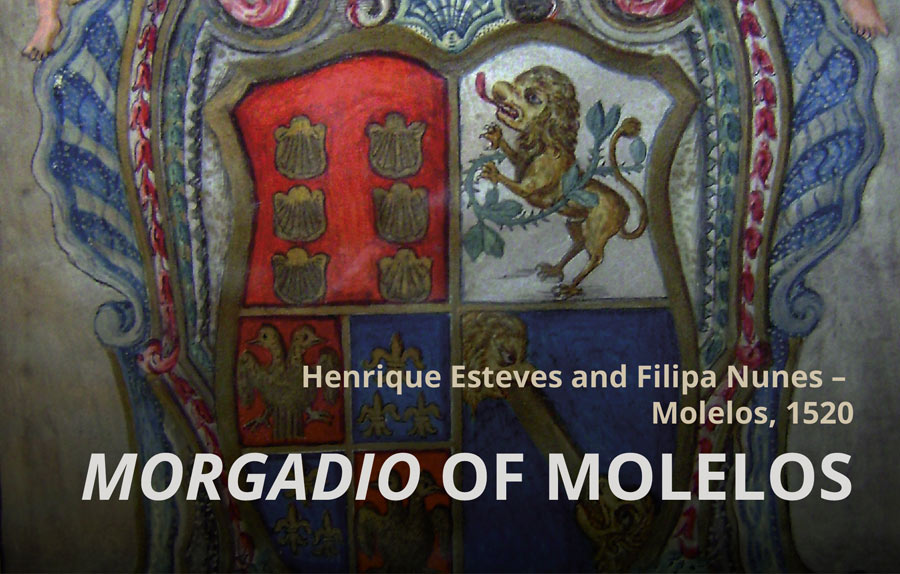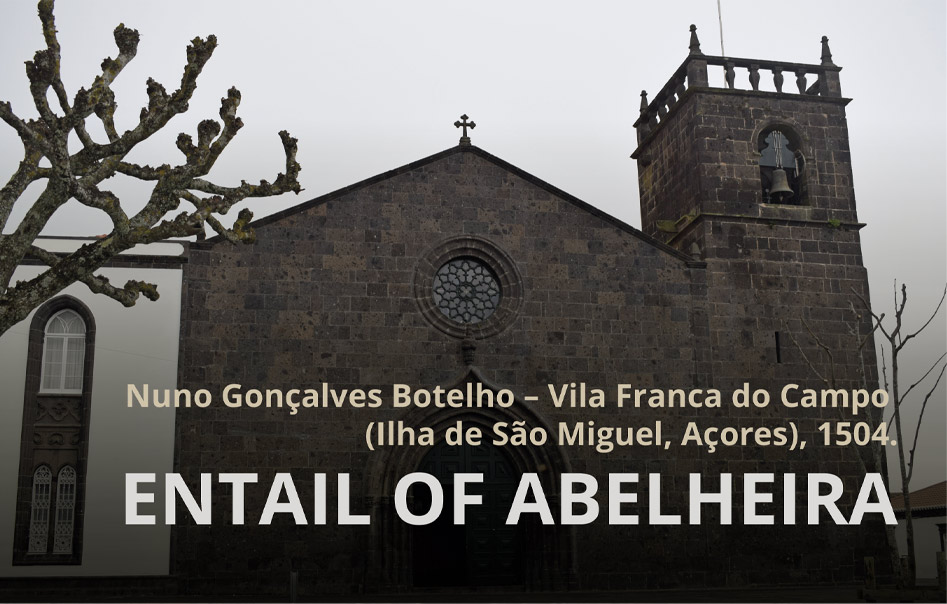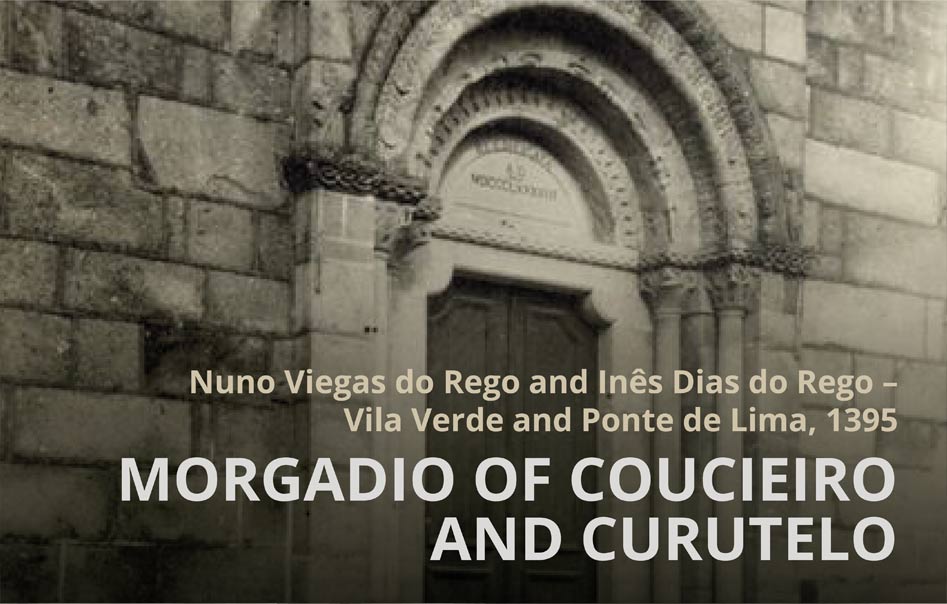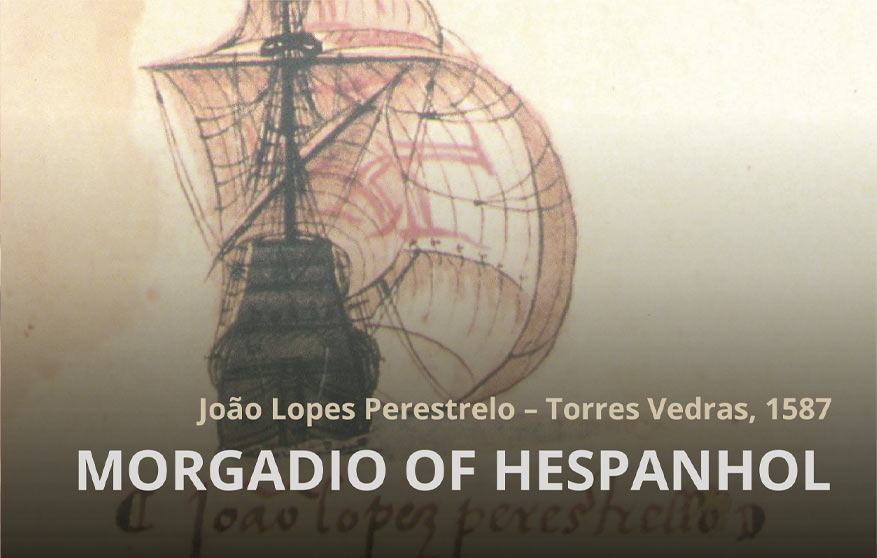Entail of the month (December, 2023)
Morgadio and Chapel of Quinta da Torre
Tomás de Noronha and Helena da Silva, Caparica, 1569
The morgadio and chapel of Quinta da Torre was founded by Tomás de Noronha and his wife Helena da Silva, with land they owned in Caparica. The commitment was drawn up at Quinta do Tresonal, owned by António da Costa, on November 22, 1569 and approved on January 24, 1570 at Quinta da Torre (ARCOS, 2008: 15).
Tomás de Noronha was the only legitimate son of Leão de Noronha and Branca de Castro. He was born on St. Thomas Aquinas Day, March 7th, possibly in 1532. He was still very young when King João III chose him to be Prince João’s chamberlain, with whom he had an enviably close relationship. Against the prince’s wishes, his father Leão de Noronha sent him to study at Coimbra, where he emerged as an excellent humanist and expert in Latin, Greek, Hebrew, French and Italian, as well as becoming an illustrious theologian. For this reason, King João III sent him to the Council of Trent in 1552 (SOUSA, 1742: vol. XII, 530). Tomás de Noronha later fought in North Africa and was part of King Sebastião’s Council of State. In 1560, this monarch dispatched him as an ambassador to France to pay his respects to Queen Catherine de Medici on the death of her son, King Francis II of France, as well as to his wife Maria Stuart, Queen of Scots (SOUSA, 1742: vol. XII, 530).
[Fig. 1] Quinta da Torre (Caparica) in 1962.
Tomás de Noronha married Helena da Silva, whose deed of dowry was signed on March 23, 1558. The couple had thirteen children, including Marcos, the successor of the morgadio who, together with his brother Gil Eanes, fought in the Battle of Alcácer-Quibir. Tomás de Noronha fell seriously ill after falling from a horse and died shortly afterwards, on January 14, 1584. He is buried in the Chapter Room of the Convent of São Francisco in Alenquer, where he was joined in 1604 by his wife Helena da Silva.
The institution charter of morgadio and chapel of Quinta da Torre is a remarkable document, one of the most complete and exhaustive texts of its kind. It can be considered a true “entailing Constitution”, creating and regulating this type of organization as a corporate entity endowed with legal personality and autonomy. Composed of two parts – the institution of the morgadio and the institution and “Regiment” of the attached chapel – it provides exceptionally clear justifications for the acts carried out, and regulates in detail the succession, the assets, the “good heir” clauses and the pious suffrages.
[Fig. 2] Detail of the first folio of the institution charter of the morgadio and chapel of Quinta da Torre.
Right from the start, the reasons for the founding lapidary summarize the basis of aristocratic entailment institutions: to commemorate the soul of the founders, maintaining a continuous remembrance of what had been received from them, to sustain “the expenses of their status and nobility” and service to the king and kingdom, and finally “to support the people who by blood or upbringing are close to the founders of the said morgados and their houses when they need to help their relatives in need” (ARCOS, 2008:17). The heir to the morgadio was thus constituted as a pole of organization for the functioning of the group of relatives, because of having certain qualities. The special clauses built up this figure. The institution charter obliged all its “possessors” to have Noronha as their main family name and to use the Noronhas´ coat of arms “straight and without any mixture of others”, and regulates all possible exceptions, almost constituting a “manual” on the subject (ARCOS, 2008:22); it contains some of the most extensive clauses known, relating to treason against the king, any physical or mental problems of the heir, the marriage of the heirs, the preparation and conservation of documents, the management of conflicts and relations with external authorities.
The concern with the management of the estate is also noteworthy, as is the importance given to the conservation of the “head of the morgadio“, the Quinta da Torre. Tomás de Noronha inherited Quinta da Torre from his aunt Brites de Menezes, widow of Tristão Coutinho, son of Gonçalo Coutinho. In addition to this property, the morgadio was made up of several other assets that Tomás de Noronha had inherited from his father and his uncles Tristão Coutinho and Brites de Menezes and from the aforementioned wedding dowry, including also several others that he acquired alone and together with his wife Helena da Silva. In the Archives of the House of the Counts of Arcos, there are several deeds for the purchase of rustic properties in Caparica by Tomás de Noronha in 1573, which were possibly acquired with money he had inherited from his father Leão de Noronha, who had died the previous year.
[Fig. 3] The Noronhas’ full coat of arms stone above the portal of the Palácio do Salvador, built by D. Tomás de Noronha in Alfama and which was once the manor house of the Counts of Arcos.
Family adherence to the model thus created is evident, among other possible examples, in the entail founded by Maria de Noronha, one of the daughters of the founders of the entail of Quinta da Torre. In his will, Tomás de Noronha had stipulated a sum of 3$000 cruzados from the income of the entail of Quinta da Torre for the marriage of his second daughter Joana, as his firstborn Beatriz had followed the religious life. However, as Joana had died unmarried during her mother’s lifetime, this amount went to her third daughter, the aforementioned Maria. Widowed and childless, Maria de Noronha established a chapel in Alfama with the money she had received from her father, in favor of the descendants of her first-born brother Marcos (ACCA, 1569: maço G, capilha 1).
The morgadio and chapel of Quinta da Torre had a normal succession until the life of its 10th morgado, the Count of Arcos, Nuno de Noronha e Brito, when the entails were extinguished. The Quinta da Torre was expropriated in 1974 with the aim of building the School of Science and Technology of the NOVA University of Lisbon on its land.
Conde dos Arcos
Coordination: Maria de Lurdes Rosa and Rita Sampaio da Nóvoa
Sources and bibliography
Archive of the House of the Counts of Arcos (ACCA).
ARCOS, Conde dos – “A instituição do Morgado de Capela na Quinta da Torre em Caparica, em 1569-1570” [transcription of the document], in Almada na História. Bulletin of documentary sources, 13-14 (January/June – July/December 2008), pp. 15-31.
ARCOS, Conde dos – The Quinta da Torre dos Condes dos Arcos in Caparica: 500 years of History, Experiences and Heritage. Almada Archaeology Center. Almada, 2021.
CARDOSO, Jorge – Agiológio Lusitano. Faculty of Letters of the University of Porto. Porto, 2002.
ROSA, Maria de Lurdes (coord.) – D. Álvaro da Costa e a sua Descendência, Séculos XV-XVII. Institute of Medieval Studies, Center for Overseas History and Roman Paths. Lisbon, 2013.
SOUSA, D. António Caetano de Sousa – Genealogical History of the Portuguese Royal House. QuidNovi and the Portuguese Academy of History. Coimbra, 1742.
Other entails of the month



